How about dealing with a pest that has over 6,000 different species? Just try to wrap your head around that! Yes, there are over 6,000 thrips species, and they all have a robust immune system that makes them difficult to eradicate using traditional methods such as chemical pesticides. Thrips can cause extensive damage to your crops and plants before you even realize they are there, and gardeners who are dealing with an infestation of thrips often worry about how to get rid of these nasty bugs from their plants. In this article, let’s talk about how to get rid of thrips on houseplants.
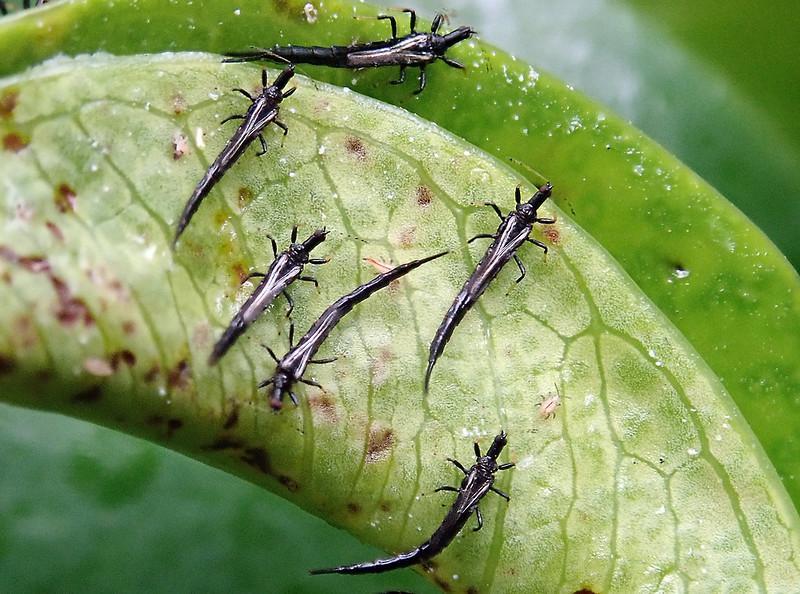
Thrips are tiny black bugs that are commonly found in houseplants, and they can be very irritating.
You can eliminate thrips using natural, biological, and chemical methods. Start by isolating the infested plant and clipping the damaged parts. Then wash the plants or spray the infested plant with soapy water or neem oil.
Also, you should reinforce natural treatments with biological control and introduce beneficial insects in your garden. These beneficial insects feed on thrips and will significantly reduce the thrip population over time. Using chemicals against thrips should be your last resort, as thrips can develop resistance against chemicals, and it will make the problem even worse.
Continue reading this article if you are battling an infestation of thrips. We will help you learn how to use these methods in detail and how to make your garden trip-free.
How To Identify Thrips On Your Plants?

Thrips are so tiny that they can be challenging to spot with the naked eye.
Due to their small size, thrips can be challenging to spot. You won’t detect them on your plant until the infection has reached its worst possible stage. However, if you want to see thrips, we have two easy methods for you.
The first method entails the use of sticky traps. We recommend using blue sticky traps rather than yellow ones because thrips are much easier to spot on a blue background. In contrast, the second option is even easier and, more importantly, totally free. Take a piece of white paper and place it underneath the infected plant.
If you give the plant a light shake, you should notice some thrips falling off onto the white paper. No matter what approach you take, the thrips should be in front of you at this point, and you can use a magnifying lens to examine them.
Upon closer inspection, you will notice that these bugs are very small, measuring between 1/50th and 1/25th of an inch in length and having a thickness comparable to that of a sewing needle. Adult thrips, called thunder flies, have very little wings fringed at the edges.
As mentioned above, there are more than 6000 species of thrips; of course, they are not all harmful and detrimental. Some are good for your plants, but it will be difficult for you to tell. Therefore, rather than wasting time trying to distinguish between the 6,000 species of thrips and preserving the beneficial thrips, we will concentrate on eliminating thrips in general.
Related: How To Get Rid Of Thrips From Your Garden For God? The Ultimate Guide
Life Cycle Of Thrips
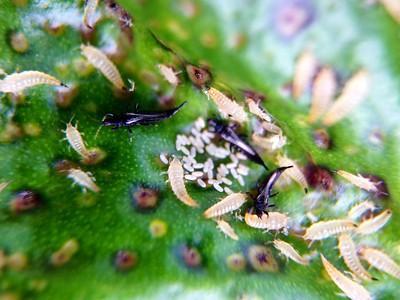
Thrips females can live for up to 30 days and lay anywhere from 2 to 10 eggs daily.
There are three distinct stages in a thrips’ life cycle: the egg, the nymph, and the adult. This entire cycle, from egg to adult, can be finished in as little as two weeks if the conditions are right, which means that the climate needs to be warm and humid.
The female thrips lay their eggs without mating with the males (asexually).
Thrips lay these eggs in tiny holes in the host plant’s tissue, where they will be safe from the harsh elements. After the eggs hatch, the nymphal stage begins, and the young thrips immediately begin feeding on their host plant.
Then after two more nymphal stages, the juvenile thrips crawl into the earth to pupate. Adult thrips emerge from their pupae after about ten days and return to their host plant, completing the life cycle. Adults can only live for one or two months, but in a year, you may see up to 12 generations of thrips in your garden with many life stages existing all at once.
Thrips Damage To The Plants
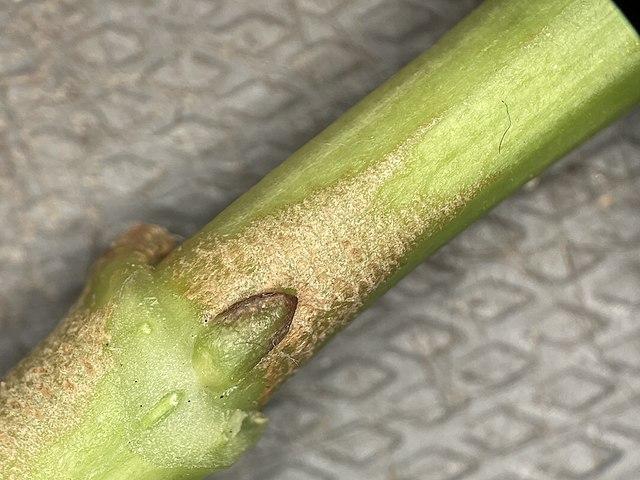
The damage caused to plants by thrips appears on the leaves as streaks, speckling, and little white spots.
It is quite unusual for a thrip infection to kill a houseplant. Thrips cause most of their damage to a plant’s foliage and, in the event of a severe infestation, can lead to stunted plant growth. Apart from damaging the plants, thrips also ruin the beauty of your garden.
The damage to herbaceous ornamental plants and vegetable crops is significantly worse than to other plants because of the associated viruses easily transmitted to vegetable crops. The thrips themselves might not be able to kill your plants, but the viruses that they distribute will almost certainly spell disaster to your flower and food crops.
The first sign of a thrip infestation is typically leaves that are beginning to yellow or seem dirty. The damaged parts of the leaves will initially turn a white or grayish color, then brown as they begin to die. The afflicted plants also become spotty, discolored, and twisted.
Here are some more telltale signs of thrip damage that you should look for in your garden:
- Stunted plant growth
- Distorted leaves and fruit
- Leaves with brown stripes
- Small white spots on leaves
- Deformed flower buds
- Flower buds are not blooming on time
- Tiny insects with fringed wings on the leaf undersides or in the blooms
So, if your plants show any of the above signs of thrips damage, you should start the treatment as soon as possible, and here is how you can do it:
Difference Between Thrips and Aphids

Aphids are pear-shaped insects around 1/16 to 1/8 of an inch long and have small, soft bodies.
Aphids and thrips are commonly mistaken for one another because the damage they inflict seems quite identical. As a gardener, you need to be able to discern the difference between the two. Aphids are egg-shaped insects that range in size from about 2 to 4 millimeters that feed on the sap of plants, depriving the plants of nutrients.
Thrips, on the other hand, are little insects with wings (1/25-1/50 of an inch) that feed on the foliage of your plants. In addition, they might transmit viruses and other plant diseases to your garden. As a direct consequence of this, the plant’s growth is impeded, and its leaves fall off.
While the damage done by aphids and thrips may appear identical at first glance, the result of each infestation is very distinct. And, even though there are some common treatments to get rid of both, we suggest you differentiate between these pests and treat them separately.
Related: Aphids Vs. Thrips | Which Is Worse And How You Can Get Rid Of Them?
How To Get Rid Of Thrips
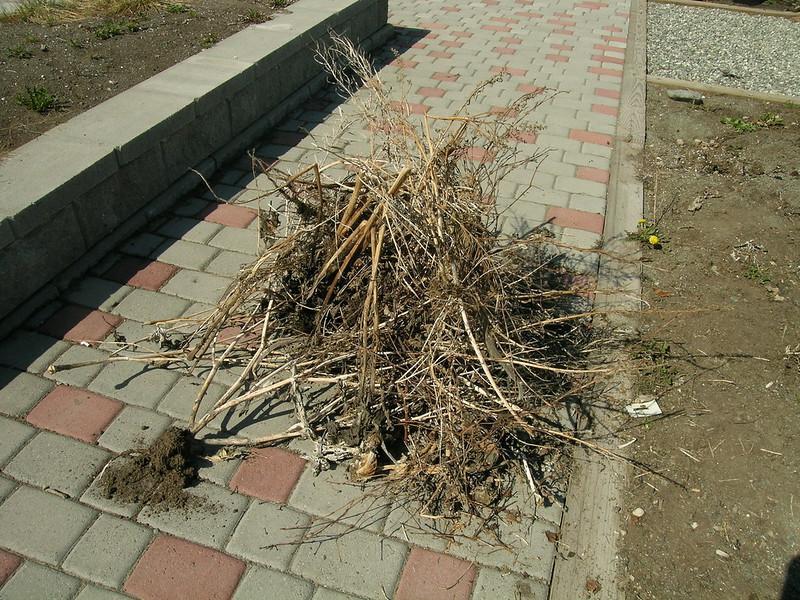
If you want to get rid of thrips, you should get rid of the weeds and grass around your gardens.
To start things off: When trying to get rid of thrips, you should avoid using any chemicals. The immune system of thrips is highly developed, and they can rapidly acquire resistance to insecticides. If you maintain a consistent treatment schedule, you should have no trouble getting rid of thrips utilizing natural, organic, or biological approaches.
These methods are easy to use, environmentally friendly, and cost-effective.
The following thrips removal methods are given in a systematic order, and you should try to follow them in sequence. One more piece of guidance before we get started: putting all of your eggs in the basket of a single strategy will not yield the best results.
It is usually a good idea to employ numerous management strategies to eradicate any insect infestation. This being said, let’s get started!
Removal Of Infested Plant
Damage caused by thrips can be identified by the stippling or wrinkled appearance of the leaves and the presence of black fecal stains on the leaves. The afflicted leaves need to be trimmed down and removed as soon as possible. If there is a significant thrips infestation on the plant, move it to a location that is entirely separate from the other plants in your garden.
It will stop thrips from spreading throughout the house. In other instances, removing individual leaves and isolating the plant may not be sufficient to fix the issue. You may be required to eliminate the plant entirely from your garden. It is not an easy choice to make, but in all likelihood, it will work out for the best.
Wash Thrips Off With A Water Hose
Did you know that you can get rid of thrips just by washing your plants?
Thrips are pretty small compared to other insects, and as a result, they are readily driven away by powerful water jets. If you have plants that are kept inside, you should move them outside so you can clean the leaves with the water hose. This will eradicate thrips together with their eggs and reduce the population.
If you cannot relocate the plant outside, you can give the leaves a quick rinse in the sink or shower instead. Be sure to wash the undersides of the leaves as well, since this is where thrips like to hide when they are not actively feeding on the plant.
Warm water should be used, and it is preferable to focus on the affected areas. Otherwise, extra water will fill the pot, and you will go over water your plant while washing the plant.
Use Soapy Water To Get Rid Of Thrips
Most of the time, it can be challenging to relocate indoor plants outside or wash them with a water hose. If this is the situation and you cannot wash your plants, you should mist the leaves of your indoor houseplants with a mixture of dish soap and water.
If you want to make soapy water, you must add around two tablespoons of detergent or dishwashing liquid to one gallon of water, and you’ll be good to go.
When you are spraying your plant, make sure that not only the leaves but also the other sections of the plant are well covered. After you have finished treating the plant, give it a last rinsing with a spray of clean water to get rid of any soapy water residue.
This is important because it will prevent the beneficial insects from suffering any harm and will also shield the leaves from the harmful effects of the detergent.
Using Neem Oil To Get Rid Of Thrips
An all-natural insecticide, neem oil is extracted from the seeds of the neem tree. It is effective against a wide variety of pests. Still, in contrast to synthetic chemical pesticides, it does not pose a threat to bees or other pollinators or beneficial insects that may be present in the garden. Neem oil is taken up by the plant and eventually becomes a component of the plant itself.
As a result, the components of neem oil can be employed to protect your plant against insect assaults for quite some time after application. It is very similar to vaccination for plants. At home, you can prepare a neem oil spray by combining one gallon of water with four teaspoons of neem oil, two teaspoons of dishwashing liquid, and one more teaspoon of neem oil.
This neem oil spray needs to be applied thoroughly to all sections, including the underside of the leaves and the flowers, in order to achieve the most satisfactory results.
Related: How To Get Rid Of Thrips On Orchids For Good? The Ultimate Guide
Biological Control Of Thrips
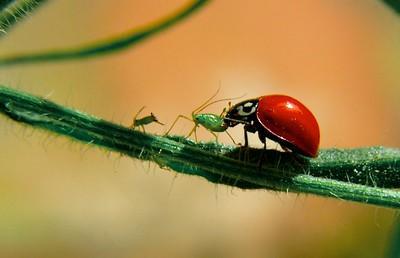
Combining beneficial insects and predators to control thrips protects plants and prevents population growth.
Due to the widespread use of pesticides, several species of thrips have developed resistance to these chemicals, rendering the majority of approved pesticides ineffective. As a result, biological management is the strategy that is currently recommended for use when thrips need to be managed on a large scale, such as in greenhouse crop production.
Biological thrips control involves using a variety of predators and parasitoids to protect plants from thrip damage and keep thrip numbers in check.
Biological control of thrips entails two steps.
- Getting rid of the adult thrips on the foliage.
- Getting rid of the thrip eggs and pupae in the soil.
Two different predator insects are employed for these two purposes.
To get rid of the adult thrips on the foliage, the first thing that should be done is to release orius, a species of pirate bug. The Orius is a predatory bug that feeds on all stages of the thrip life cycle, including the adults.
However, if there is only a little infestation, it won’t be easy to build a colony of orius. It takes a while for them to mature, and they need a lot of thrips to eat.
The second part of the biological control process involves the introduction of the macro-mite (macrocheles robustulus) in order to eliminate the thrip eggs and pupae that are present in the soil. These predatory mites dwell in the soil and feed on any small pupae or larvae that might be found in the soil of a garden.
Chemical Control
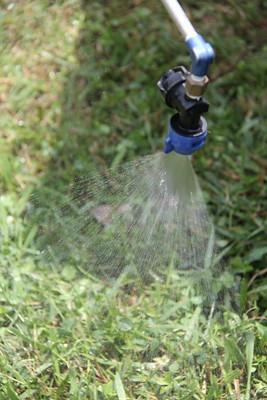
When thrips damage becomes intolerable, a chemical can reset the population.
In light of what has been discussed so far, chemical control measures must be avoided at all costs. It doesn’t take long for thrips to get immune to the effects of chemicals; thus, employing those substances will only worsen the problem.
Having said all of this, if you are still convinced that you need to make use of a pesticide, we would advise using pyrethrin spray.
What Is Pyrethrin Spray And How It Kills Thrips
Pyrethrum is a chemical that is extracted from chrysanthemums, sometimes known as mums. Upon coming into contact with the thrips, the pyrethrum opens sodium channels in the nerve cells of the insect. When sodium channels are activated, neurons repeatedly fire, which causes paralysis and ultimately results in the thrips’ death.
However, pyrethrum is not meant to be used only once because it quickly degrades significantly when sunlight exposes.
Bear in mind, as well, that even though pyrethrum is relatively non-hazardous to the environment due to the rapidity with which it dissolves, it is very toxic to fish, bees, and other aquatic animals.
However, it poses a significantly lower risk of poisoning human beings. This is because it is difficult for the substance to be absorbed via the skin, yet, breathing in pyrethrum-based chemicals can still cause damage to the lungs.
How To Prevent Thrips From Coming Back?
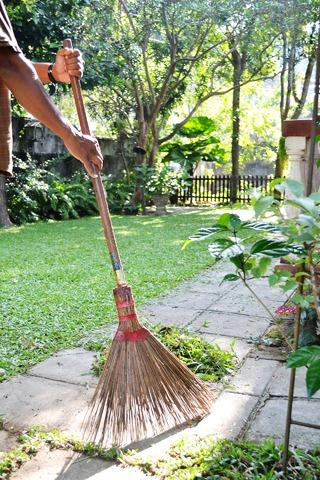
It is quite impossible to prevent thrips from appearing totally, but you can work to reduce their population.
You put in a lot of effort to get rid of the thrips, and it goes without saying that you don’t want them to return. Also, if you haven’t dealt with thrips before, you should prevent them from attacking your plants in the first place so that you won’t have to deal with them later. In any event, some strategies can be utilized to ward off an infestation of thrips.
Keeping Your Garden Clean
Thrips thrive in the ground litter, such as dead branches, blossoms that have been deadheaded, and stems that have been clipped. Therefore, you can substantially minimize thrip populations by removing plant detritus over the winter instead of allowing clipped leaves, stalks, and blooms that have been deadheaded to remain on the ground.
Thrip Repellent Plants
Because there are over 6,000 different species of thrips, a single plant will not be able to ward off all of these thrips. In light of this, we propose you fill your garden with a mixture of catnip, basil, chives, and garlic. Incorporating these fragrant herbs into your garden will prevent thrips from entering your garden and wreaking havoc on your crops.
Conclusion
Thrips are one of the most unpleasant pests for gardeners to deal with since they are difficult to notice, and the damage they produce frequently appears to be more of a nutritional or disease concern rather than the harm caused by insects.
Thrips are difficult to eradicate since they can infest a wide variety of plants, both decorative and edible, and they can cause widespread damage. However, there are many cultural, chemical, and biological control methods that you can use to get rid of thrips in your garden.
Frequently Asked Questions
How do I get rid of thrips?
Removing thrips off the leaves of outside plants is possible by spraying them with water from a hose. Pay attention to the places where leaves congregate on their undersides. However, use a spray bottle filled with a solution of dish soap and water to clean the leaves of houseplants. Saturate the affected plant with two tablespoons of dish soap in a gallon of water.
What are the symptoms of thrips?
Thrips create brown to silvery, scabby scarring on the exterior fruits but do not affect the fruit’s internal quality or flavor. Thrips and their larvae congregate on the undersides of the leaves, with their black dung stains. The damage done by thrips includes browning, deformation, premature drying, and dropping of leaves, flowers, and buds.
What kills thrips the best?
Insecticidal soaps, horticultural oil, and natural pyrethrins (piperonyl butoxide) are effective contact sprays for controlling greenhouse thrips. Sometimes, more than one application is required to get rid of thrips. Pyrethrin is a natural insecticide derived from chrysanthemums that can be very effective against thrips and will get rid of thrips.
What causes thrips to come around?
Many thrips species, which feed on a wide variety of plants, invade gardens and lawns throughout the spring and summer when plants in weedy areas and grasslands begin to dry up. It is best to avoid growing sensitive plants next to these regions, and you should also get rid of any weeds in the area that could serve as alternate hosts for the thrips pest.
Can plants recover from thrips?
It can take a few months, but your plants can entirely recover from the thrips infestation. The undersides of afflicted leaves will have colonies of these small sucking insects. However, once leaves have been injured, they cannot recuperate, and it is preferable to remove them. The warm and dry months are the worst for thrips damage.
Can thrips bite humans?
Although thrips can bite humans, there is little evidence that they transmit disease. When these pests seek moisture on the skin, they will sometimes bite humans. People walking barefoot through the grass may get bitten on their toes and feet by these pests. Bites from a thrip often only result in mild irritation and do not have any long-term consequences.
What are thrips attracted to?
Sticky yellow and blue cards are used to monitor thrips populations since the insects are attracted to those colors. In order to catch the insects while they are in flight, the cards should be strategically positioned among the plants just above the canopy level. Pan traps made of blue or white water can also be utilized for monitoring purposes.
Sources for Further Reading
Thrips Management Guidelines–UC IPM. (2022). Retrieved 5 October 2022, from http://ipm.ucanr.edu/PMG/PESTNOTES/pn7429.html
Thrips Management Program for Horticultural Crops. (2022). Retrieved 5 October 2022, from https://edis.ifas.ufl.edu/publication/IN1145
Biology and Management of Thrips Affecting the Production Nursery and Landscape. (2022). Retrieved 5 October 2022, from https://extension.uga.edu/publications/detail.html?number=C1158
Thrips. (2022). Michigan State University Extension Pest Management. Retrieved 5 October 2022, from https://www.canr.msu.edu/resources/thrips
Best Management Practices for Thrips (Thysanoptera: Thripidae) in Cotton. (2022). Retrieved 5 October 2022, from https://lgpress.clemson.edu/publication/best-management-practices-for-thrips-thysanoptera-thripidae-in-cotton/
Editor’s Recommendations
How To Use Neem Oil On Houseplants? A Comprehensive Guide
How To Protect Hostas From Snails & Slugs? The Ultimate Guide
What Are The Little White Things in Plant Soil 8 Ways to Get Rid of Pests?







